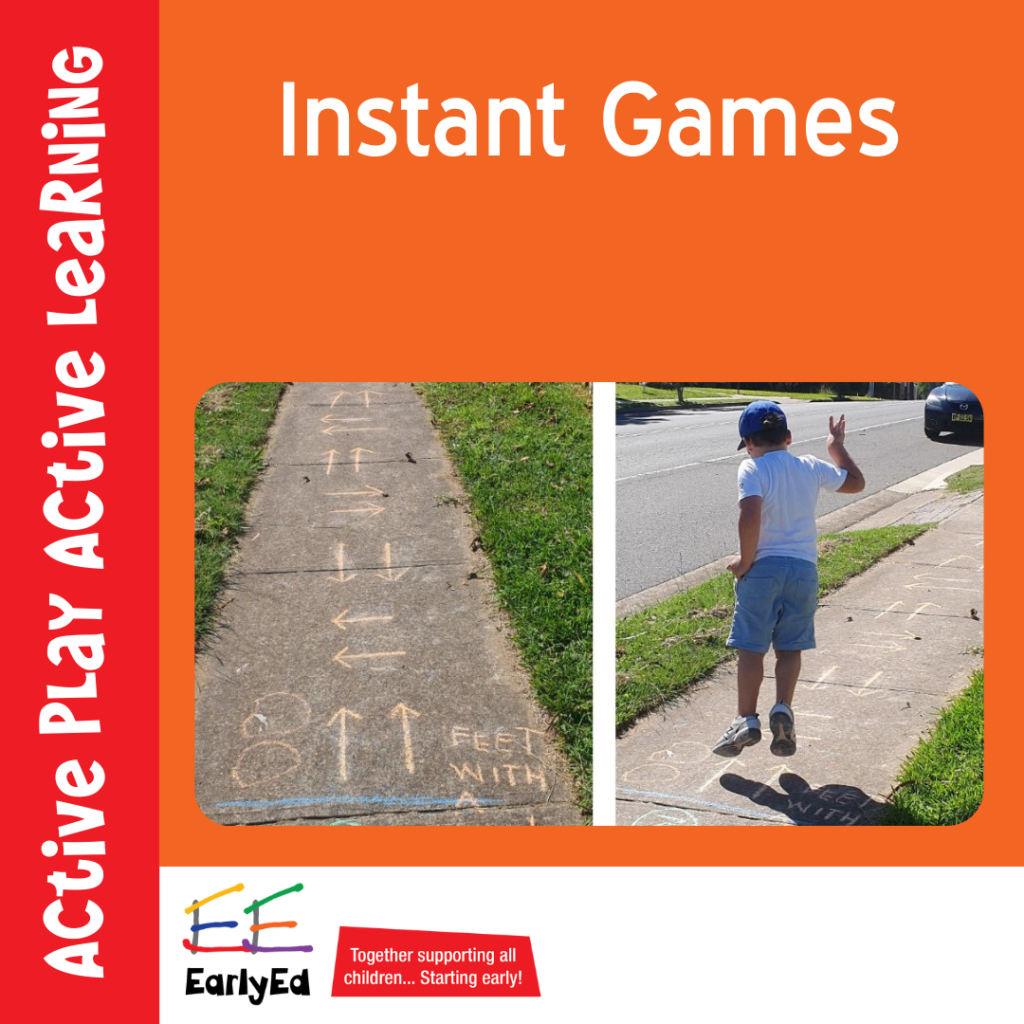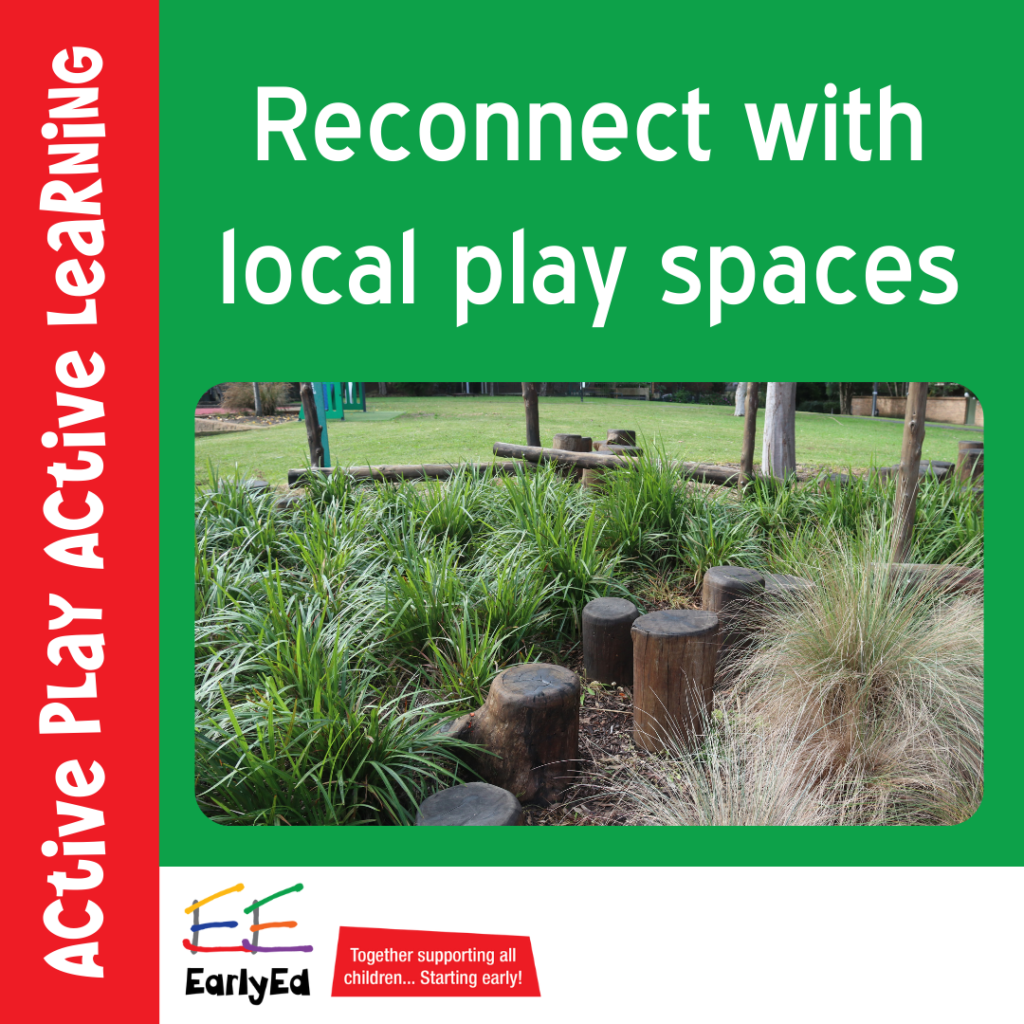
The weather is warmer and we are starting to reconnect with friends and family. We still need to stay close to home. This means every little outdoor space, even street scapes have something to offer us.
It is the perfect time to make sure you know about EarlyEd’s Active Play_Active Learning resources.
EarlyEd has been bringing you ideas to help you make the most of outdoor spaces through Learn To Play_Play to Learn and Active Play_Active Learning projects, on Facebook and Instagram and on our website. Find out more how this information will support your child’s development.
So how does outdoor, active play support your child’s active learning?
We all learn best when we can make sense of our world, when what we do is interesting, engaging and fun. What might look like meaningless play to adults is actually learning opportunities for children. When play is fun learning it is appealing to children. We know active play is especially good for children as they need exercise. Our Active Play ideas show how else it can be good for your child.
Active play naturally builds skills such as physical strength, stamina and coordination. But it also supports children to develop:
- problem solving skills,
- imagination
- maths
- numeracy
- independence
Active play also provides opportunities to learn social and emotional skills important for playing with others.
The Active Play ideas make it easy to find things to do close to home rather than having time to go somewhere special.
Why is local play important?
So many green spaces are never used. It is easy to think that the only great places to play are where there is play equipment. Even if there is play equipment, it is valuable to have ideas to do in the rest of the park. Playing local gives your child the chance to:
- connect with other children that they are likely to meet again
- practice and explore further things that are familiar
- learn how to navigate their way around their community
- not be tired from the journey
- go out to play more often
Active Play, Active Learning
The play ideas have come from a funded project called Reconnect With Local Parks – play spaces project for the Willoughby City Council area with the support of Chatswood RSL Club LTD club grants 2020. This built on the previous support from North Sydney Council.
These are not just ideas for these areas but can used in any council area you happen to be in, at home or away!
Active Play, Active Learning is a series of play ideas that will help you
- find places in your local area
- see the opportunities for learning to play and learn through active play.
Active Play Team
The learning series has been created by a team of physiotherapists, speech pathologists and educators therapists and educators who understand how active learning supports children’s development. The team approached the project understanding the challenges families may face in getting out into local play spaces.
When creating resources the team considered the current recommendations from The Nest – A national plan for youth and wellbeing (agenda item vi), which indicates that children need to be more active and spend less time on TV and screen based activities.
The team also took into consideration the barriers for families being involved in outdoor play – how get to there, play there and stay there (reflecting the Everyone Can Play Guideline).
The resource sheets include:
- Ideas to encourage you to look close to home, notice outdoor spaces you can walk to and may not of thought of as a play space before. This is helpful if you find time is a barrier to outdoor play because you think you need to travel somewhere else to find a suitable play space.
- Ideas of how everyone can play, children of all ages and abilities.
- Ideas of how to extend time in outdoor play spaces with low cost/no cost suggestions of things to take or do at the outdoor space.
Finding places to play close to home, in your own neighbourhood is easy when you know what to look for.
Have a look at the resource sheets and you will see the possibilities in everyday outdoor spaces near to you and what you can do in these spaces to foster your child’s play and learning.
Once you know what to look for in these everyday spaces you can learn how to stay and play longer by:
- using what is already there in different ways, or
- taking a few low cost/no cost items you already have at home to extend play further.
There are so many opportunities for play and learning in places you may not have thought about before.
Is it time for your family to reconnect with local play spaces?
Donna McKern
Special Educator, EarlyEd



